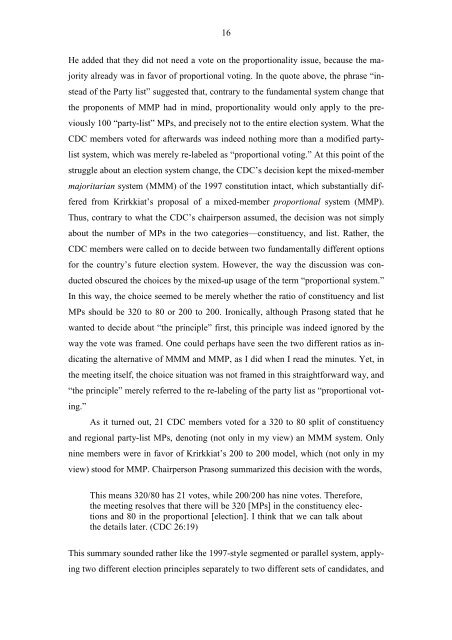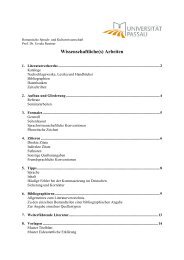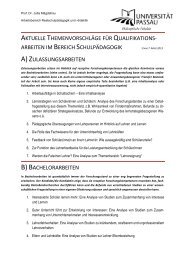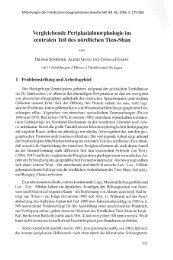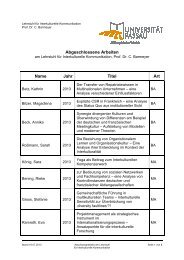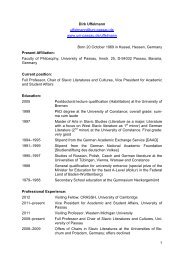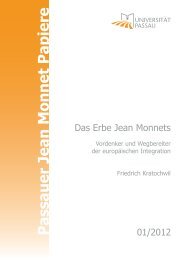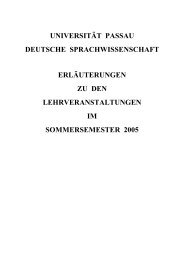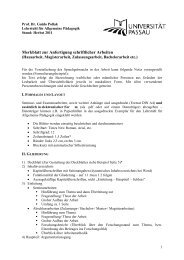The attempt to adopt a mixed-member proportional election system ...
The attempt to adopt a mixed-member proportional election system ...
The attempt to adopt a mixed-member proportional election system ...
You also want an ePaper? Increase the reach of your titles
YUMPU automatically turns print PDFs into web optimized ePapers that Google loves.
16<br />
He added that they did not need a vote on the <strong>proportional</strong>ity issue, because the majority<br />
already was in favor of <strong>proportional</strong> voting. In the quote above, the phrase “instead<br />
of the Party list” suggested that, contrary <strong>to</strong> the fundamental <strong>system</strong> change that<br />
the proponents of MMP had in mind, <strong>proportional</strong>ity would only apply <strong>to</strong> the previously<br />
100 “party-list” MPs, and precisely not <strong>to</strong> the entire <strong>election</strong> <strong>system</strong>. What the<br />
CDC <strong>member</strong>s voted for afterwards was indeed nothing more than a modified partylist<br />
<strong>system</strong>, which was merely re-labeled as “<strong>proportional</strong> voting.” At this point of the<br />
struggle about an <strong>election</strong> <strong>system</strong> change, the CDC’s decision kept the <strong>mixed</strong>-<strong>member</strong><br />
majoritarian <strong>system</strong> (MMM) of the 1997 constitution intact, which substantially differed<br />
from Krirkkiat’s proposal of a <strong>mixed</strong>-<strong>member</strong> <strong>proportional</strong> <strong>system</strong> (MMP).<br />
Thus, contrary <strong>to</strong> what the CDC’s chairperson assumed, the decision was not simply<br />
about the number of MPs in the two categories—constituency, and list. Rather, the<br />
CDC <strong>member</strong>s were called on <strong>to</strong> decide between two fundamentally different options<br />
for the country’s future <strong>election</strong> <strong>system</strong>. However, the way the discussion was conducted<br />
obscured the choices by the <strong>mixed</strong>-up usage of the term “<strong>proportional</strong> <strong>system</strong>.”<br />
In this way, the choice seemed <strong>to</strong> be merely whether the ratio of constituency and list<br />
MPs should be 320 <strong>to</strong> 80 or 200 <strong>to</strong> 200. Ironically, although Prasong stated that he<br />
wanted <strong>to</strong> decide about “the principle” first, this principle was indeed ignored by the<br />
way the vote was framed. One could perhaps have seen the two different ratios as indicating<br />
the alternative of MMM and MMP, as I did when I read the minutes. Yet, in<br />
the meeting itself, the choice situation was not framed in this straightforward way, and<br />
“the principle” merely referred <strong>to</strong> the re-labeling of the party list as “<strong>proportional</strong> voting.”<br />
As it turned out, 21 CDC <strong>member</strong>s voted for a 320 <strong>to</strong> 80 split of constituency<br />
and regional party-list MPs, denoting (not only in my view) an MMM <strong>system</strong>. Only<br />
nine <strong>member</strong>s were in favor of Krirkkiat’s 200 <strong>to</strong> 200 model, which (not only in my<br />
view) s<strong>to</strong>od for MMP. Chairperson Prasong summarized this decision with the words,<br />
This means 320/80 has 21 votes, while 200/200 has nine votes. <strong>The</strong>refore,<br />
the meeting resolves that there will be 320 [MPs] in the constituency <strong>election</strong>s<br />
and 80 in the <strong>proportional</strong> [<strong>election</strong>]. I think that we can talk about<br />
the details later. (CDC 26:19)<br />
This summary sounded rather like the 1997-style segmented or parallel <strong>system</strong>, applying<br />
two different <strong>election</strong> principles separately <strong>to</strong> two different sets of candidates, and


